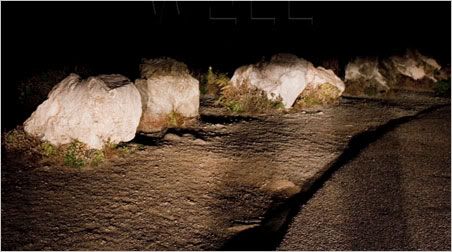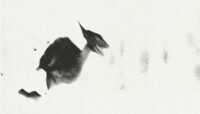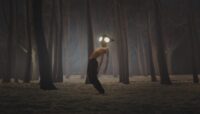
“Ready for the World”
from the album Love Remains
2010
iTunes
In fall 2009, a mysterious artist called How to Dress Well posted a free EP called The Eternal Love, and a half-dozen more EPs followed on the project’s blog in the next six months. The music on these mp3 releases consisted of cheap-sounding home recordings that were murky and blown out, but the style drew on the ethereal end of contemporary R&B, with layered vocals, falsetto, and tons of reverb. They turned out to be the work of Tom Krell, a philosophy student who splits time between Brooklyn and Cologne, Germany. The online buzz surrounding HTDW built steadily through 2010, and now we have Love Remains, a collection of songs taken from the EPs (some of which have been re-touched in the studio) plus a handful of new tracks.
Krell has clear and specific ideas of what he wants to do with How to Dress Well, many of which use the process of memory as focal point. According to blog posts and interviews, Krell cares deeply about R&B from the late 1980s and ’90s, and he’s creating a ghosted version of the music, suggesting how sounds wear down and fade over time. “I Started Remembering in 1989” was the title of a blog post from just before that first EP, and it accompanied an iconic photo of Bobby Brown; as Krell noted on his Twitter, it would be a good title for some future How to Dress Well retrospective.
The conceptual foundation is interesting, but Love Remains succeeds because you don’t have to think about that stuff to absorb its peculiar magic. For one thing, it has an arresting surface-level prettiness that offers an easy way in. “Ready for the World,” a sort of half-cover of “Love You Down,” the silky 1986 slow jam by the Michigan group Ready for the World (it was also a minor hit in the ’90s for singer INOJ), sums up the How to Dress Well aesthetic. The lyrics are indecipherable, suggesting that feeling where you’re trying to sing an old song you love but can’t remember the details, so you mumble along with the melody; the percussion is crude and indistinct, and somehow sounds halfway between a sample and a bad recording of hand claps in a bedroom; a sampled voice from elsewhere repeats through the track, sounding both machine-like and human. Interesting questions come to mind — Is this a cover, and do I need to know the original? Why is it so distorted? — but it’s also easy to let “Ready for the World” wash over you, which turns out to be true of the album as a whole.
The basic template of “Ready for the World” is subtly modified from track to track, so while the album feels very much like a complete statement, individual songs also stand out. One major highlight is “Decisions [ft. Yüksel Arslan],” a lurching waltz with voices piled up into a mini choir that hits with an almost symphonic grandeur. The hugeness of its sound is something considering how modestly it was recorded, and “Decisions” manages to feel both tragic and uplifting at once. The opening “You Hold the Water” is HTDW at its ambient extreme. Beginning with a sample of dialog from Todd Haynes’ film Safe, it pulses along with darker, almost industrial samples bumping up against Krell’s voice, offering a mood that intentionally avoids coming together as a song. “Endless Rain” gets an unbelievable amount of mileage from a single loop of drum and piano: As the Soul II Soul-like rhythm bit repeats, Krell ad libs vocals that seem to bubble up from some kind of pre-verbal place. You can pick out “you” and “say” and not much else, but it doesn’t matter; the track still manages to capture a feeling in its two and a half minutes.
If the contemporary R&B slow jam thrives on the tension between earthy sexuality and the spiritual concerns of gospel, How to Dress Well mostly does away with the sex part. The thin recording and distant-sounding vocals cause the physicality of the music to dissipate into a spectral fog, leaving behind music that feels intimate and devotional and ultimately lonely — there’s a song called “Can’t See My Own Face” and another called “My Body,” and you get the feeling that the domain of the music probably stops there. This isn’t a space for probing the specifics of relationships; it’s far too hermetic for that. There’s a lot of rain and a lot of death — two tracks called “Suicide Dream,” another called “You Won’t Need Me Where I’m Goin’.” An album I keep thinking of when listening to How to Dress Well is Panda Bear’s 2004 LP, Young Prayer. That was another homemade record haunted by mortality with blurred words that nonetheless managed to communicate a powerful and highly personal sense of spiritual yearning. There are also hints of Bon Iver in Krell’s falsetto and in the way he transforms the signifiers of R&B into something homegrown and personal. You can sense a few different strands of music from the last few years coming together with the sounds of an earlier era to form something new.
The distortion is at places so harsh, it’s hard not to wonder why Krell doesn’t do away with it. But with the sex and romantic yearning removed, the tension between the ethereal and prayerful mood comes from the quality of the recording, the way the music seems to be breaking apart as you are listening to it. How to Dress Well is to my mind the biggest breakthrough in home-recorded lo-fi in years. It feels brave, like it’s going places a lot of artists in this sphere are afraid to go. And since the emotions communicated are direct and palpable even if the specifics are elusive, it also has something for people who don’t follow this world of music closely. I can promise you that as I type this right now, 15-year-old kids who have been freaking out over this album are in front of their computers, trying to make their own version of this music. We’ll see how that goes. But the impulse makes sense. Love Remains, because of its construction, feels like music that comes from inside, as if the act of listening completes it.


